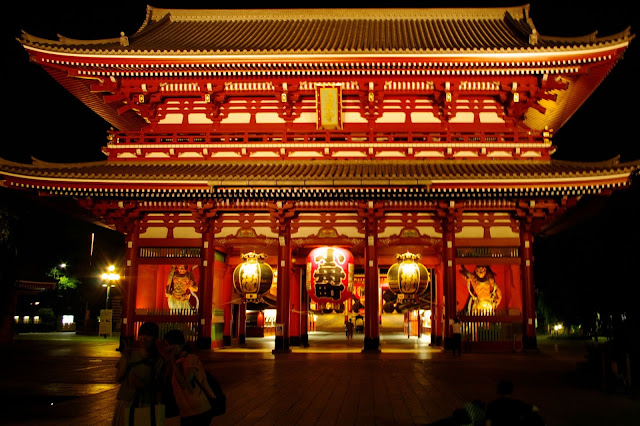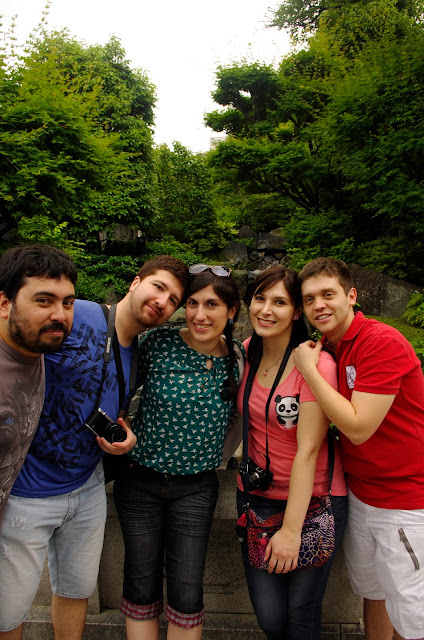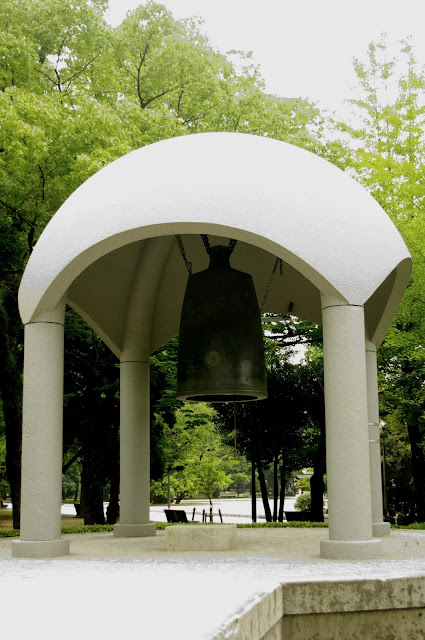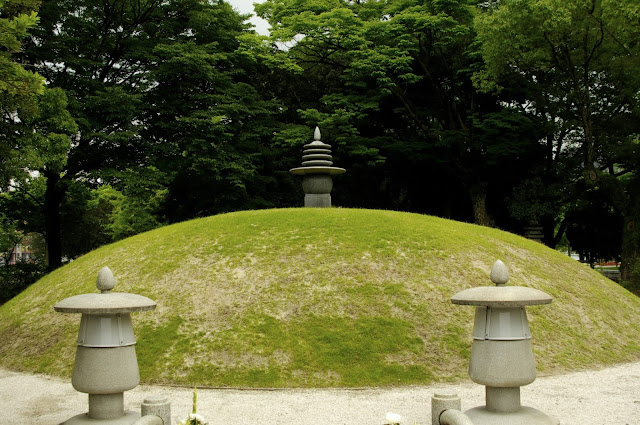Torii at Miyajima
As I promised !! With this post I start the looooonggg story of my trip to Japan.
The idea of this trip was born last year when one of my friends visited Japan and wanted to go there again, but with friends. We thought that it was a good idea and bought the tickets that same year.
We chose to travel between the months of June and July, as it's the time when summer begins and in theory would have good weather ... Theory, because being there we realized that the last weeks of June and early July are summer rainy season; it rained almost every day, we had to buy umbrellas, water layers and closed shoes xD Anyway, the rain was tropical so we did not feel cold.
In total, the trip took about 19 days. We visited Hiroshima, Tokyo, Kanazawa, Kyoto, Osaka and Nagoya (this was not in the plans). As there are many days, locations and photos (soooo many to edit), I will tell the details of the trip in several parts; this first part will cover the departure from Chile, arrival in Tokyo and visiting Hiroshima.
The idea of this trip was born last year when one of my friends visited Japan and wanted to go there again, but with friends. We thought that it was a good idea and bought the tickets that same year.
We chose to travel between the months of June and July, as it's the time when summer begins and in theory would have good weather ... Theory, because being there we realized that the last weeks of June and early July are summer rainy season; it rained almost every day, we had to buy umbrellas, water layers and closed shoes xD Anyway, the rain was tropical so we did not feel cold.
In total, the trip took about 19 days. We visited Hiroshima, Tokyo, Kanazawa, Kyoto, Osaka and Nagoya (this was not in the plans). As there are many days, locations and photos (soooo many to edit), I will tell the details of the trip in several parts; this first part will cover the departure from Chile, arrival in Tokyo and visiting Hiroshima.
The Itinerary
The itinerary that we planned was this one, but it did not go as planned (story I'll tell you later :P)
Journey Chile - Dallas -Tokyo
- June 20: Departure from Chile. The flight was via American Airlines, with a stopover in Dallas.
-22 June: Arrival at Narita Airport. Travel to Tokyo, with 1 day stay in the Asakusa district.
-23 June: Departure to Hiroshima. 2 day stay.
-25 June: Departure to Kyoto. We stay in Kyoto for 4 days. From here we would visit Nara, Osaka and Himeji.
-29 June: Departure to Takayama. 1 day stay.
-30 June: Kanazawa Departure: Stay for 2 days.
-02 July: Departure to Tokyo. 8 days stay.
-10 July: Departure to Chile.
Journey Chile - Dallas -Tokyo
Well, of the flight itself there is not much to tell. Many flying hours, in total were about 22 hours of flight, not counting the waiting hours at the stopover.
The flight between Santiago and Dallas took about 8 hrs. and we had to make a stop of 6 hours. The trip between Dallas and Tokyo lasted about 14 hours.
The flight between Santiago and Dallas took about 8 hrs. and we had to make a stop of 6 hours. The trip between Dallas and Tokyo lasted about 14 hours.
All flights were unbearable for me. I'm quite tall (1.78 m.), so traveling in economy class became a torture for my legs. As there was no way to be comfortable and without pain in the feet, I slept very little, about 4 hours throughout the trip. So I recommend traveling with special tights for circulation, which helped me a lot and many hours of series and movies to watch.
We arrived at Narita Airport at 2 pm. This mega airport is located within 60 km. from Tokyo. It is literally giant, one can easily get lost. It has 3 different terminals, connected via buses and each terminal has trains to Tokyo.
After we get our bags and we position ourselves, we decided to split us in two groups; One look for cell phones chips we purchased to communicate and have internet, and the other group ask how to get to Tokyo. I ended up taking care of our many bags :P
There are several lines of trains to Tokyo and the travel time depends on the rate paid, but ranges from about 50 minutes on the express train and 90 minutes by regular train. There are also buses and taxis, but for convenience, we opted to take the train.
We arrived at Narita Airport at 2 pm. This mega airport is located within 60 km. from Tokyo. It is literally giant, one can easily get lost. It has 3 different terminals, connected via buses and each terminal has trains to Tokyo.
After we get our bags and we position ourselves, we decided to split us in two groups; One look for cell phones chips we purchased to communicate and have internet, and the other group ask how to get to Tokyo. I ended up taking care of our many bags :P
There are several lines of trains to Tokyo and the travel time depends on the rate paid, but ranges from about 50 minutes on the express train and 90 minutes by regular train. There are also buses and taxis, but for convenience, we opted to take the train.
Asakusa and Sensō-ji Temple
Our first stop was at the Asakusa district, located in the northeast of central Tokyo. We stayed in a hostel type Ryokan, which have traditional Japanese rooms with no walls and where you sleep on a futon.
It was very interesting to sleep on a futon, it's more comfortable than you can imagine and it's apparently beneficial for the spine and for people who snore, because of the completely horizontal position in which you sleep. Our room had a small bathroom, but there were also communal bathrooms.
It was very interesting to sleep on a futon, it's more comfortable than you can imagine and it's apparently beneficial for the spine and for people who snore, because of the completely horizontal position in which you sleep. Our room had a small bathroom, but there were also communal bathrooms.
This is how the room looked. Photo from the Ryokan where we stayed.
After leaving the luggage, we decided to go to the Senso-ji Temple and the surrounding area.
Senso-ji temple is dedicated to Kannon, the Buddhist enlightened that is associated with compassion. It's Tokyo's oldest temple, founded in the year 628 and it's a rather large temple, with several buildings, statues, a five storied pagoda and a big central hall.
As we got to the temple at night, it was already closed but the outdoor grounds can be visited and the temple has ornamental lights.
Senso-ji temple is dedicated to Kannon, the Buddhist enlightened that is associated with compassion. It's Tokyo's oldest temple, founded in the year 628 and it's a rather large temple, with several buildings, statues, a five storied pagoda and a big central hall.
As we got to the temple at night, it was already closed but the outdoor grounds can be visited and the temple has ornamental lights.
Nakamise Street: The main gateway to the temple.
From the temple you can see Skytree tower, which is a kind of "new Tokyo Tower." It has a height of 634m. and Tokyo Tower is 333 m.
Statue that was in the temizuya, a pavilion where people perform the ritual of purification with water prior to entering the main hall of the temple.
Statue of Jizō, protector of pregnant women, travelers, children, firefighters, among others. Popularly known as the guardian of the unborn child and as an offering, the parents of these children dress statues with red cloaks and
knitted caps.
We also visited Daiso and Don Quijote stores which are open until very late (some of these stores are open 24 hrs). Daiso is a chain of shops selling everything at 100 yen and Don Quijote is another retailer, which sells everything, food, medicine, cosmetics, costume, basically whatever comes in your mind. These stores are everywhere in the big cities.
Photo of the entrance to the Don Quijote of Asakusa. The penguin is the pet of the store, isn't it cute? Photo obtained from the following Link.
This is a Daiso store, so you can imagen the amount of stuff they sell at 100 yen. Photo obtained from the following Link.
The next day, we went to the post office to send our bags to the Kyoto hotel, so we can travel lighter to Hiroshima. This was really hard because you have to fill out a form and clearly we didn't understand what information was requested, and what we should write (it was written in kanji). The postal officers were so friendly and even though they can hardly understood us, they filled out the forms for us. They really had a very good disposition, they were too kind and without them we'd finished riding the Shinkansen with all the suitcases.
After the post office, we visited the temple again to see it with day light. We could see the various rituals that people do here and we even saw a ceremony in the central building.
Yogodo Hall. Home to the Buddhas who followed the teachings of Kannon. Buddha is not only a deity, it's all those who were able to attain enlightenment.
Lady presenting the incense to the temple. Incenses are then burned in a censer and it's believed that the smoke have healing powers. Part of the ritual is that the person fans the smoke toward the body part they want to heal.
Pond that was in the temple grounds.
In the temple I took a paper with fortune or O-mikuji, which was pretty bad :P So as the tradition says, I folded and tied the paper with the fortune in one of the walls with wires. According to tradition, this makes the fortune to stay "waiting" in the temple, instead of binding to the person.
You take a random wand, which has written a type of fortune. Then you look for the corresponding drawer and take a paper with fortune.
We also saw the stores of the main entrance of the temple. These shops sell traditional and religious items, souvenirs and different kinds of food. A curious note is that in this place we ate ice cream (those typical with cones) and were not allowed to leave the store until we finish the ice cream; as we understood, this was to prevent we stain others as we walk. This was our first introduction to Japanese culture of respect for others.
Journey to Hiroshima
After visiting the temple, we went to Hiroshima. This was the first time we took the Shinkansen. The train is pretty fast but you don't feel the speed. Train' seats are very comfortable, with plenty space; and it's allowed to eat because is a long trips (which isn't allowed in other short trips trains or subway). To imagine how fast they are, the trip took about 5 hours and by bus is about 12 hours.
After visiting the temple, we went to Hiroshima. This was the first time we took the Shinkansen. The train is pretty fast but you don't feel the speed. Train' seats are very comfortable, with plenty space; and it's allowed to eat because is a long trips (which isn't allowed in other short trips trains or subway). To imagine how fast they are, the trip took about 5 hours and by bus is about 12 hours.
Shinkansen platform.
This is the inside of the Shinkansen. As you see it is quite comfortable, it has space above the seats to leave luggage (not very big), hangers for clothes or bags and plugs to charge your cell phone or notebook.
After leaving luggage at the hotel, we went to visit the Hiroshima Castle and the surroundings. Again, because we arrived in the afternoon, we were only able to visit the outer grounds, since the castle was already closed.
View from the hotel.
View from the hotel.
Hiroshima streets.
View from the bridge entrance to the castle. You can see the water moat surrounding the castle.
View from the bridge entrance to the castle. You can see the water moat surrounding the castle.
Hiroshima Castle and Gokoku Shrine
This castle was built in 1589, but was destroyed by the atomic bomb in 1945 and then rebuilt in 1958. It has 5 floors, in the first 4 there are various exhibits, as the castle is also the museum and the top floor is a viewpoint .
Hiroshima Castle.
Hiroshima Castle.
The Shinto shrine Gokoku is inside the castle area. The original shrine was founded in 1869, but suffered relocations and was completely destroyed in 1945. It was rebuilt in its present location in 1956.
The Gokoku shrines are dedicated to those who died in wars and there are in several points of Japan.
Main entrance of the temple, with its corresponding Torii. A Torii is a gate that represent the separation between the divine world and the everyday world.
Central pavilion of the sanctuary, called Hayden. It is adorned because they were near the date where Tanabata is celebrated. This is a party where they celebrate the reunion of Orihime and Hikoboshi, lovers which are allowed to meet once a year, the seventh day of the seventh lunar month of the lunisolar calendar.
In this photo you can see the fountain of temizuya, which is the hall where the ritual of purification with water is performed. The ritual consists in taking water with the bucket, wash the left hand, then his right, the mouth and finally the remaining water is poured vertically.
Resting.
One of the exits of the castle ground.
After our visit to the castle, we ended up visiting the stores with arcade games and UFO-catcher. These stores are also open until very late and you end up spending a lot of money in these machines, they are really addictive xD
The UFO-catcher is the typical machine with "the claw" you move to get a prize. In Japan there are thousands of these machines, of different types and degrees of difficulty.
The UFO-catcher is the typical machine with "the claw" you move to get a prize. In Japan there are thousands of these machines, of different types and degrees of difficulty.
Corridor full of UFO Catcher.
This is a UFO Catcher, can see more about them in Danny choo's Blog.
This is a machine in a pachinko parlor that simulates racing. In Japan you can't bet money, so they use these machines that when you win you get little balls, which can be exchanged for prizes. If you wish, you can exchange these prizes for money and a legal loophole is generated.
As we couldn't get inside the castle, we went again the next day. Inside there are displays of weapons, utensils, clothing and architectural items (eg tiles).
Shukkei-en Garden
The next day, we visited the Shukkeien Garden, which is a circular garden with a central lagoon. Inside the lagoon there are small islands and and a bridge with an arch that crosses it. Around the lagoon there are a number of hills, viewpoints and sections with different types of vegetation.
Bridge in the middle of the lagoon.
Very happy crab :)
White Heron and Crane.
Koi fish turned crazy, when we threw them food. The park has special food dispensers for them.
Small rice plantations.
Beautiful hydrangea.
Miyajima
The Miyajima island is located about 50 km. from Hiroshima and was declared World Heritage by UNESCO. To reach the island you have to take a boat from a place call Miyajimaguchi, which takes about 10 minutes to get to Miyajima.




Group of schoolchildren visiting the island.
This island is famous for its Torii built at the sea. When the tide is high it seems like it's floating.
This Torii is part of Itsukushima shrine, which is also partially built over water.
There is also a five storied pagoda. This pagoda is associated with the medicine Buddha.
Another interesting thing about the island is that it is full of deer. They are everywhere, freely and try to get food from tourists (sometimes in a somewhat violent way XD).
Hiroshima Peace Memorial Park
The last day in Hiroshima we visited the Peace Memorial Park, which is dedicated to all victims of the nuclear bomb. It was built on the esplanade that left the bomb and has several monuments, memorials and a museum.
The place is quite emotional. You can see the buildings that managed to remain standing after the bomb, permanent shadows in various places and the museum is really impressive.
The following photos are from different memorials that are within the park:
The place is quite emotional. You can see the buildings that managed to remain standing after the bomb, permanent shadows in various places and the museum is really impressive.
The following photos are from different memorials that are within the park:
A-Bomb Dome. This are the ruins of the building of Hiroshima Prefectural Industrial Promotion Hall. This was the closest building to the hypocenter of the atomic bomb (the point where it exploded) and was partially resisted the impact.
Memorial Tower to the Mobilized Students. This monument honors the souls of about 10,000 students, who were killed by the atomic bomb. In Hiroshima there were 8,387 students who were serving the state during the war, as demolishing structures or working in factories.
The ornaments that are on the sides, are groups of 1,000 origami cranes, called Senbazuru. According to Japanese legend, if a person folds 1,000 cranes is granted a wish. Currently they have become symbols of peace, because of the story of Sadako Sasaki, which I'll explain later.
This is the statue of Sadako Sasaki, a girl who was 2 years old when she suffered the radiation of the bomb. Product of radiation, at age 12 was diagnosed with leukemia and because of his condition, she couldn't leave the hospital. In the hospital she learned about the legend of the Senbazuru and began to make 1,000 origami cranes. He died shortly after and there are two ends to her story; In the first end, she didn't managed to bend all the cranes and their classmates completed the remaining cranes in her honor, and in the second end, she folded 1,400 cranes, after seeing that her wish had not been fulfilled.
Atomic Bomb Memorial Mound. It contains the ashes of 70,000 unidentified persons killed by the bomb.
Cenotaph (empty tomb). It has the names of all persons who died from the bomb. The arc represents a refuge for the souls of the victims.
In front of the arc, the following sentence it's written: Please rest in peace, for we/they shall not repeat the error.
Photo inside the Memorial Peace Museum. Here is the hypocenter (point of explosion) of the bomb, which was at 600 meters high.
Photos of some of the effects of the bomb. The first photo shows a woman burned by the pattern of her kimono, the second shows permanent shadows on the steps and the third shows the permanent shadow of a valve on a wall.
Finally, that same day in the afternoon we head towards Kyoto, the city of a thousand temples. I will tell you about this part of the trip in the next post ;)
Bonus: Food
These are some of the dishes we ate at this part of the trip :)
In this photo you can see how they prepare them.
Omurice Doria. The Omurice is like an omelet of fried rice and this one in particular was gratinated.
What a long post !! I hope you liked it.
Also, here is a video I make of this part of the trip
If you want to see more photos, here is the link of the Flickr album.
Also, here is a video I make of this part of the trip
If you want to see more photos, here is the link of the Flickr album.
Hugs for everyone!!!
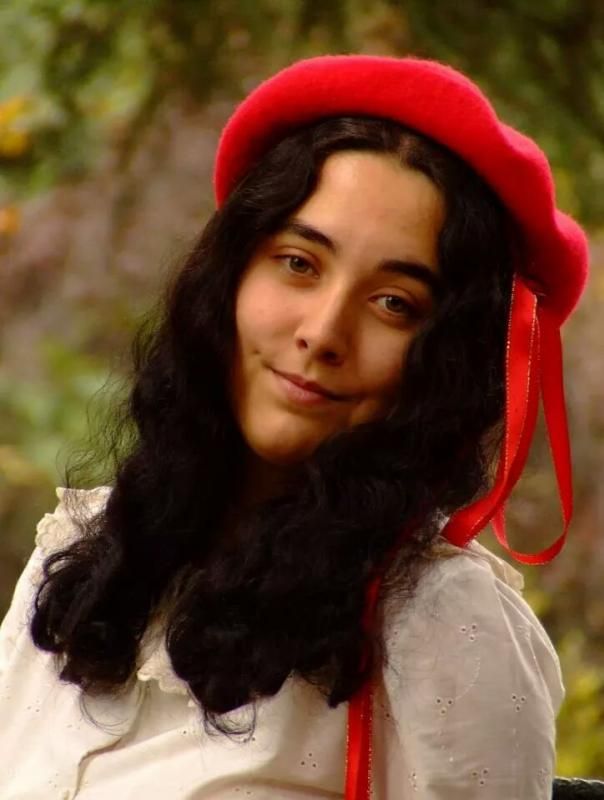








.jpg&container=blogger&gadget=a&rewriteMime=image%2F*)
























